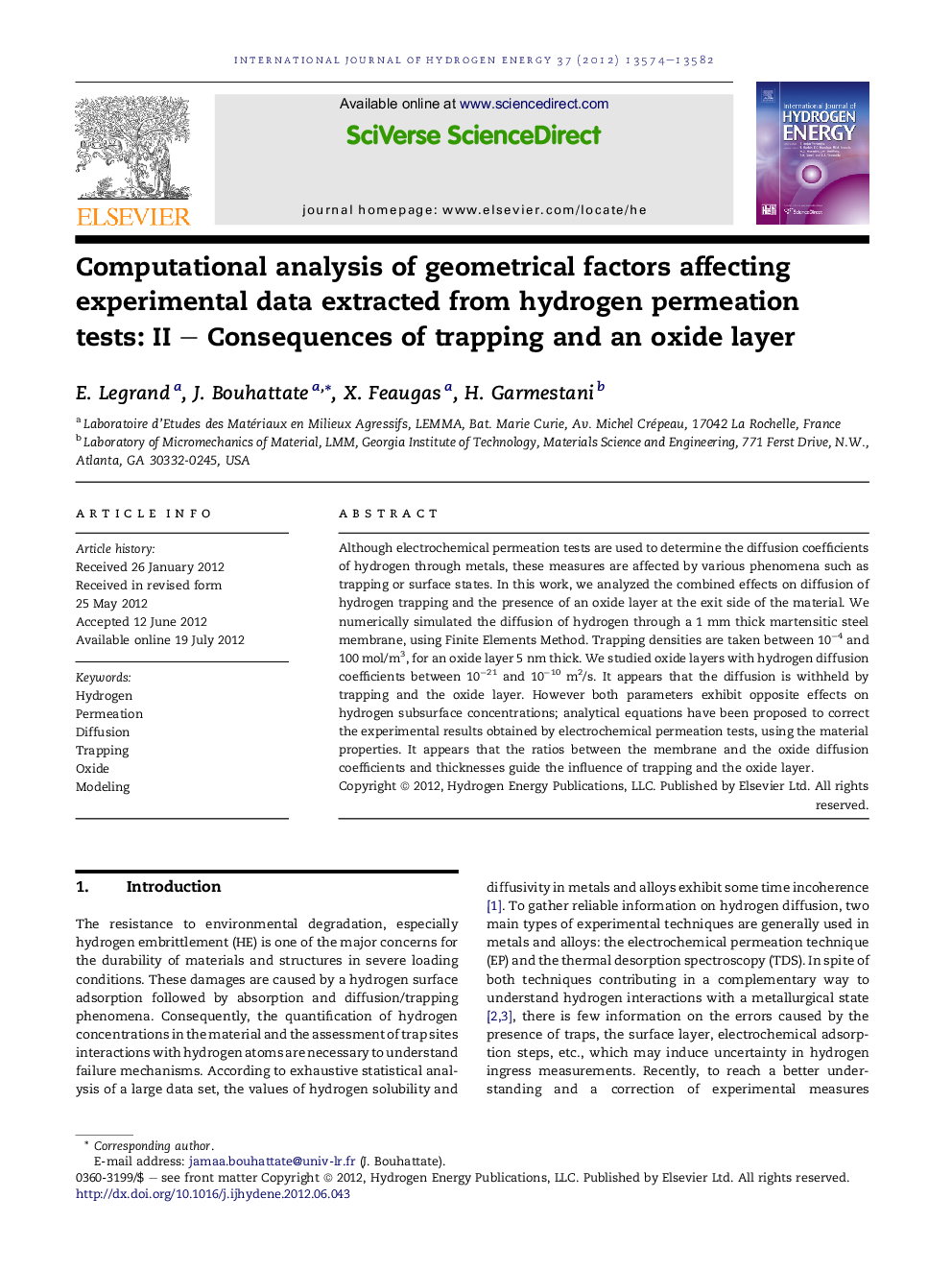| Article ID | Journal | Published Year | Pages | File Type |
|---|---|---|---|---|
| 1282255 | International Journal of Hydrogen Energy | 2012 | 9 Pages |
Although electrochemical permeation tests are used to determine the diffusion coefficients of hydrogen through metals, these measures are affected by various phenomena such as trapping or surface states. In this work, we analyzed the combined effects on diffusion of hydrogen trapping and the presence of an oxide layer at the exit side of the material. We numerically simulated the diffusion of hydrogen through a 1 mm thick martensitic steel membrane, using Finite Elements Method. Trapping densities are taken between 10−4 and 100 mol/m3, for an oxide layer 5 nm thick. We studied oxide layers with hydrogen diffusion coefficients between 10−21 and 10−10 m2/s. It appears that the diffusion is withheld by trapping and the oxide layer. However both parameters exhibit opposite effects on hydrogen subsurface concentrations; analytical equations have been proposed to correct the experimental results obtained by electrochemical permeation tests, using the material properties. It appears that the ratios between the membrane and the oxide diffusion coefficients and thicknesses guide the influence of trapping and the oxide layer.
► We simulated permeation tests with trapping of hydrogen and an oxide layer. ► We treated the flux vs time curves as pseudo experimental data. ► We examined changes between the FEM and the analytical parameters. ► We discussed the effects of trapping and the oxide layer on the diffusion. ► Analytical equations from the experimental measurements have been proposed.
